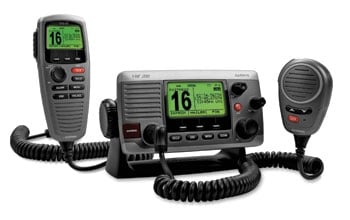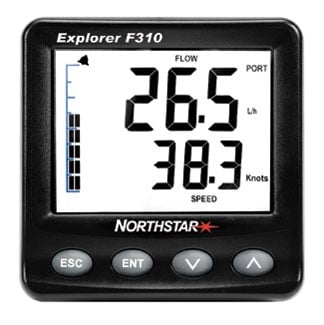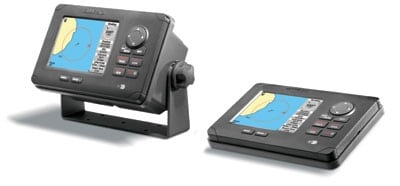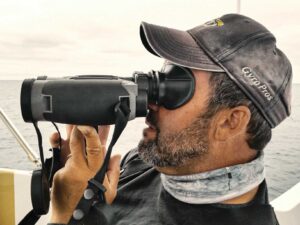
Listen Up
Garmin has entered the fixed-mount VHF arena with the VHF 100 ($249.99) and 200 ($399.99). Both have 25 watts of transmitting power, a 3.2-inch display, and NMEA 0183 ports to link chart plotters for full position polling and DSC functionality. The VHF 200 adds NMEA 2000 and comes standard with a 20-watt two-way hailer system that can be connected to a horn or external speaker. The VHF 200 can also be fitted with an optional GHS10 remote handset ($199.99), which contains all radio controls and sports a 2-inch dot- matrix display. When connected to a speaker, the remote offers intercom capability. Both models can be either surface or flush mounted, and they are waterprooof – “submersible,” says Garmin – making either a good choice for mounting in exposed locations. www.garmin.com
In Plain Sight
**

Northstar’s Explorer 310** series readouts put critical information front and center with 1.5-inch characters on a high-contrast, daylight-viewable screen. Of particular value on fishing boats might be the D310 ($349.00),which provides depth information, including shallow and deep-water alarms; the S310 ($249.00) for speed, water temperature and battery voltage; and the F310 ($479.00) with single- or dual-engine fuel sensors that provide fuel-flow management and calculate real-time fuel economy data. The R310 ($349.00) displays any data that is output from 310 series instruments, as well as NMEA 0183 v2 data from compatible instruments, and acts as a GPS repeater. Features include multiple NMEA inputs to allow connection of third-party equipment, and three display modes. www.northstarnav.com
See and Be Seen
**

Simrad’s AI50 Class B AIS** – which the FCC recently approved for sale in the U.S. – receives data from Class A-equipped commercial vessels and transmits your vessel’s position and course data to other boats equipped with AIS receivers. While the primary purpose of AIS is safety and navigation in congested or radar-blind areas, fishermen can put several of the situational-awareness features to good use. The “Buddy Tracking” feature accepts MMSI numbers and provides an alert when numbers you’ve entered come into a pre-set range. Vessels displayed on the screen are also available for “point-and-call” when the unit is networked with a compatible VHF radio. It’s a set of features that’s handy when keeping track of other boats fishing nearby, whether they are partners or competitors.
A data-logging feature records the position of your boat and others throughout the day and stores it on a removable SD card for reference, analysis and planning. $1,595; www.simrad-yachting.com









